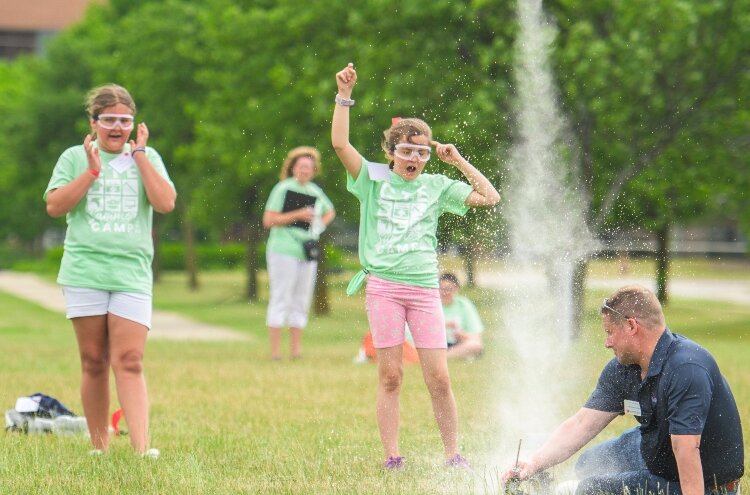This year, a remarkable 93 students from the Great Lakes Bay Region will earn the seldom-acquired title of “Chief Science Officer” before graduating from high school. In an impressive display of academic prowess and leadership, these young individuals are stepping up to play crucial roles in fostering interest in Science, Technology, Engineering, and Mathematics (STEM) fields among their peers and teachers.
The Chief Science Officer (CSO) program, first introduced in Arizona in 2015, made its way to Michigan two years later through representatives from the Saginaw Valley State University. Aimed at driving interest in STEM subjects among middle and high school students, the program has been a roaring success ever since it was implemented.
The CSO program’s broad objectives are to create a diverse group of young STEM leaders, foster communication between CSOs, improve STEM awareness in schools, and enhance student participation in relevant community discussions. These elected CSOs are also trained to lead events or initiate projects in the STEM field and interact with industry professionals across the region.
In the words of Lori Flippin, the STEM Initiative Leader for the Great Lakes Bay Regional Alliance, the students return to their respective schools after their training and create further STEM projects and events, effectively spreading knowledge of the STEM field to other students. That’s akin to having an ever-growing collective of young STEM champions.
CSOs also create action plans that help broaden the impact of STEM and present fellow students with opportunities within the field. Incidentally, these young officers also acquire important life skills such as leadership, teamwork, effective communication, problem-solving, and the burgeoning confidence to speak their minds.
The STEM@SVSU Center, founded in 2014, has played a key role in growing the CSO program. The center acts as a network linking K-12 students, universities, and employers in the region, aiming to develop a STEM talent pipeline catering to the present and future needs of the Great Lakes Bay area. The center’s prime focus areas are student experiential learning, involving STEM professionals to enhance learning, and providing professional development opportunities for educators.
A common misconception that the center tries to correct is that not all fields require a STEM background. In reality, about 80% of job roles in Michigan incorporate STEM in some way or another, according to Jake Lounsbury who is leading the efforts at the STEM@SVSU center.
The engagement with STEM does not have to be intimidating. It is through the carefully curated activities developed by CSOs that students are able to explore new horizons without inhibition. The resultant awareness of opportunities that overlooked or unknown to them previously could potentially change their perspectives on potential career paths.
More than 90 middle and high school students are currently part of the GLBR East CSO Cabinet, representing an impressive 31 schools and 16 school districts across counties including Bay, Midland, and Saginaw. This cohort commenced their journey at SVSU’s Leadership Training Institute. With such initiatives and the tireless work put in to expand the Chief Science Officer program, all students across Michigan might soon have the chance to participate and earn the CSO title.
As Michigan continues its journey towards developing a robust STEM workforce, initiatives like those undertaken by the Great Lakes Bay Regional Alliance and SVSU are kindling the interests of the region’s youth. They are laying a solid groundwork to create a skilled talent pool that will help Michigan continue to be competitive in an increasingly tech-driven economy.
In sum, the agenda is simple yet profound- to nurture the young talent, expose them to local opportunities, empower them to undertake STEM careers, and finally enlighten them about the impact they can have within their own region.




